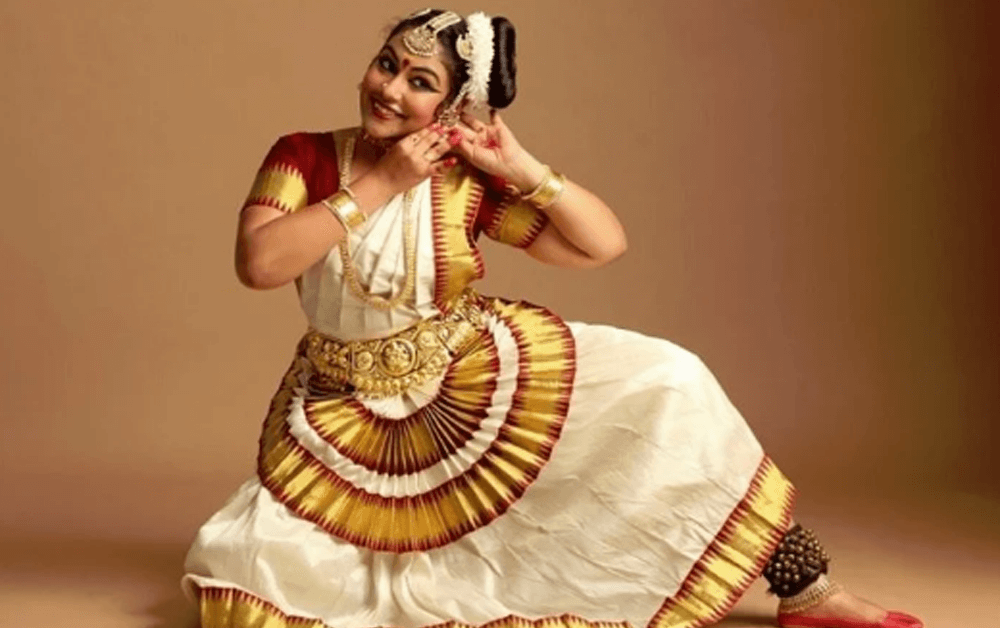Mohiniyattam

As a traditional art form, Kathak grew up in the period of the Bhakti movement. It is an ancient classical dance travelling from North India and it is referred to as Kathakars or Storytellers. Kathakars travel around and interact fictitious stories through music, dance and songs. Mainly dancers are performing the stories of Lord Krishna and conveying the stories by using rhythmic foot movements, hand gestures, facial expressions and eye work. The origin of Kathak is described in the various theories of Sanskrit text Natya Shastra written by Bharata Muni. Among the communities of Hindu and Muslim, Kathak is famous. Therefore the dresses used for Kathak are traditional to these communities. Female dancers use two types of Hindu customs. Mainly a female dancer wore a saree in a different fashion with a blouse that covers the upper body and a scarf in other places. Another type of dress is a skirt which has long embroidery with a bright blouse. Kathak dancers use traditional ornaments which beautify her hair, nose, ear, neck and hand. But at the same time, male dancers wear a silk dhoti with a silk scarf tied on the upper part of the body. Stone studded jewellery is used for male dancers. Muslim type of dress for female Kathak dancers is a skirt along with pyjama and an overcoat to cover the upper body and hands. A scarf covering the head which completes only after with light jewellery. The nineteenth century is considered the golden age of Kathak. Kathak also has two different styles such as Nritta and Nritya. Nritta also has two kinds of compositions. Tukra, the shorter one and Toda, the longer one. To express the message of the story Nritya style uses and this style of performance is called Bhaav Bataanaa. But today, Nritya style is used by Kathak. Some of the instruments such as Bansuri, Diluba, Sarangi, Sarod, Sitar, Surmandal, Tanpura, Tabla, Santur, Pakhawaj are the instruments which are used for performing Kathak. Mainly Kathak has developed into three styles such as classical, contemporary and Sufi. One of the features of Kathak is the use of spins or pirouettes. The pirouettes technique emerges from the Sufi dances of Central Asia.
Get weekly updates on the newest articles, quotes and newsletters right in your mailbox. Subscribe now
